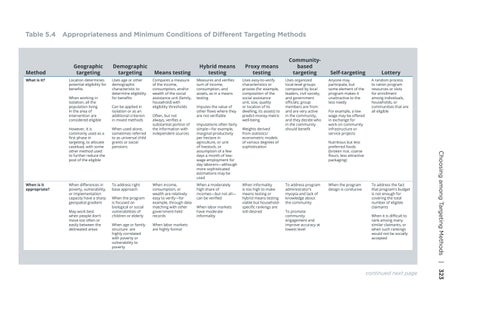Table 5.4 Appropriateness and Minimum Conditions of Different Targeting Methods
Method What is it?
Geographic targeting Location determines potential eligibility for benefits When working in isolation, all the population living in the area of intervention are considered eligible
Uses age or other demographic characteristic to determine eligibility for benefits Can be applied in isolation or as an additional criterion in mixed methods
However, it is commonly used as a first phase in targeting, to allocate caseload, with some other method used to further reduce the pool of the eligible
When used alone, sometimes referred to as universal child grants or social pensions
When differences in poverty, vulnerability, or implementation capacity have a sharp geospatial gradient
To address right base approach
May work best when people don’t move too often or easily between the delineated areas
When the program is focused on biological or social vulnerabilities of children or elderly When age or family structure are highly correlated with poverty or vulnerability to poverty
Means testing Compares a measure of the income, consumption, and/or wealth of the social assistance unit (family, household) with eligibility thresholds Often, but not always, verifies a substantial portion of the information with independent sources
When income, consumption, or wealth are relatively easy to verify—for example, through data matching with other government-held records When labor markets are highly formal
Hybrid means testing Measures and verifies sum of income, consumption, and assets, as in a means testing Imputes the value of other flows where they are not verifiable Imputations often fairly simple—for example, marginal productivity per hectare in agriculture, or unit of livestock, or assumption of a few days a month of lowwage employment for day laborers—although more sophisticated estimations may be used When a moderately high share of incomes—but not all— can be verified When labor markets have moderate informality
Proxy means testing Uses easy-to-verify characteristics or proxies (for example, composition of the social assistance unit, size, quality or location of its dwelling, its assets) to predict money-metric well-being Weights derived from statistics/ econometric models of various degrees of sophistication
When informality is too high to make means testing or hybrid means testing viable but householdspecific rankings are still desired
Communitybased targeting Uses organized local-level groups composed by local leaders, civil society, and government officials; group members are from and are very active in the community, and they decide who in the community should benefit
Self-targeting Anyone may participate, but some element of the program makes it unattractive to the less needy For example, a low wage may be offered in exchange for work on community infrastructure or service projects
Lottery A random process to ration program resources or slots for enrollment among individuals, households, or communities that are all eligible
Nutritious but less preferred foods (broken rice, coarse flours, less attractive packaging)
To address program administrator’s myopia and lack of knowledge about the community To promote community engagement and improve accuracy at lowest level
When the program design is conducive
To address the fact that program’s budget is not enough for covering the total number of eligible claimants When it is difficult to rank among many similar claimants, or when such rankings would not be socially accepted
continued next page
Choosing among Targeting Methods | 323
When is it appropriate?
Demographic targeting


